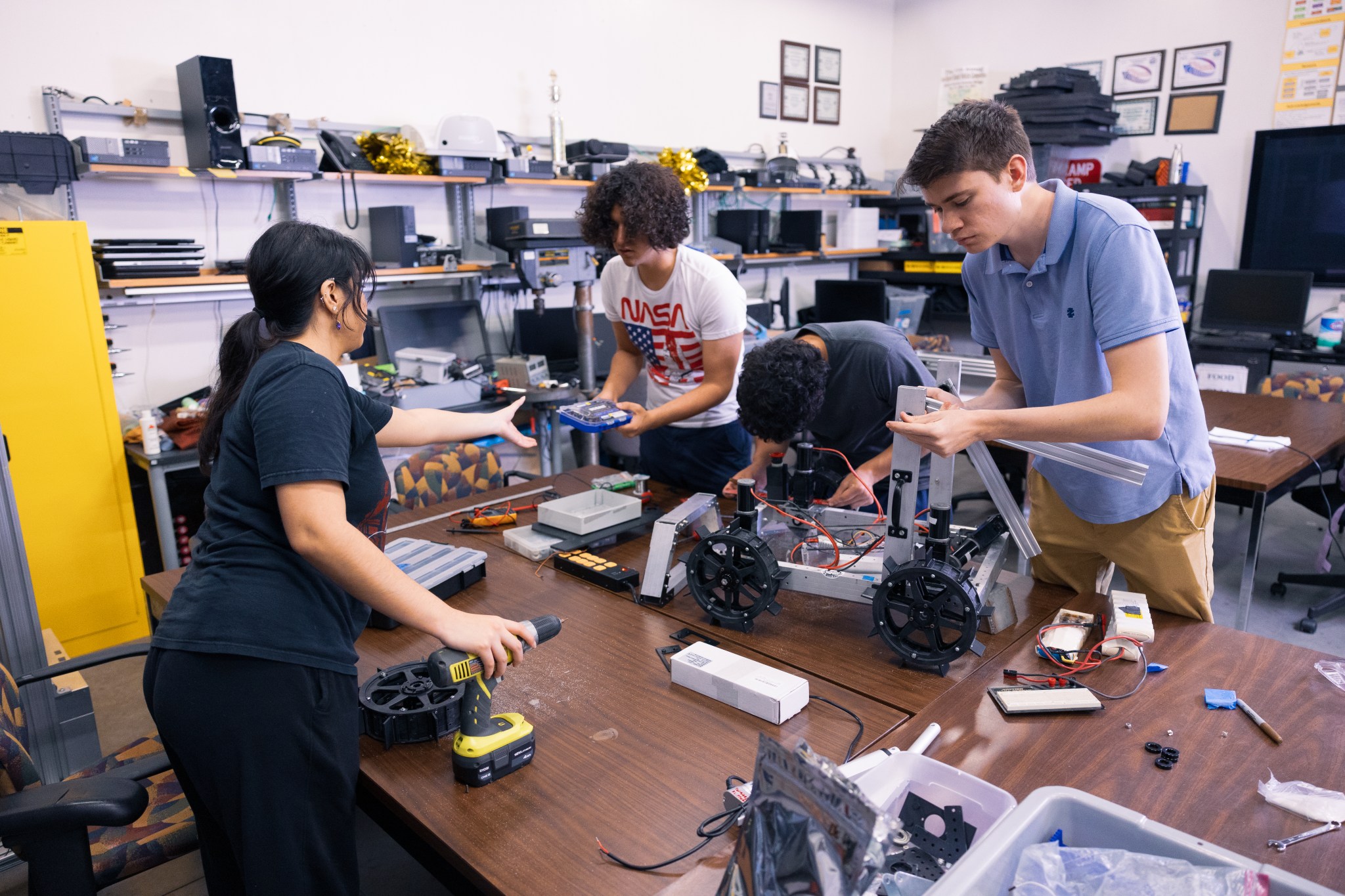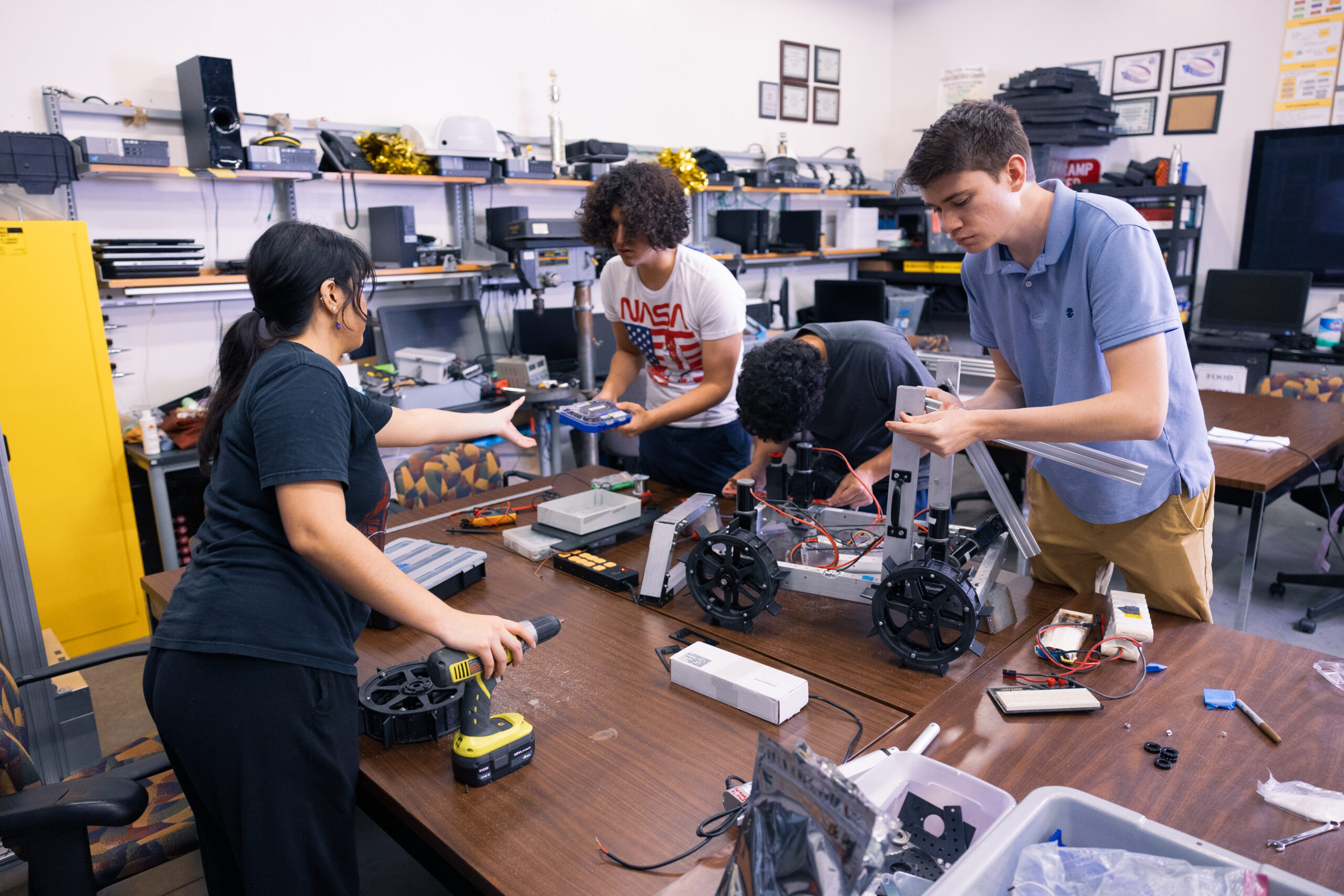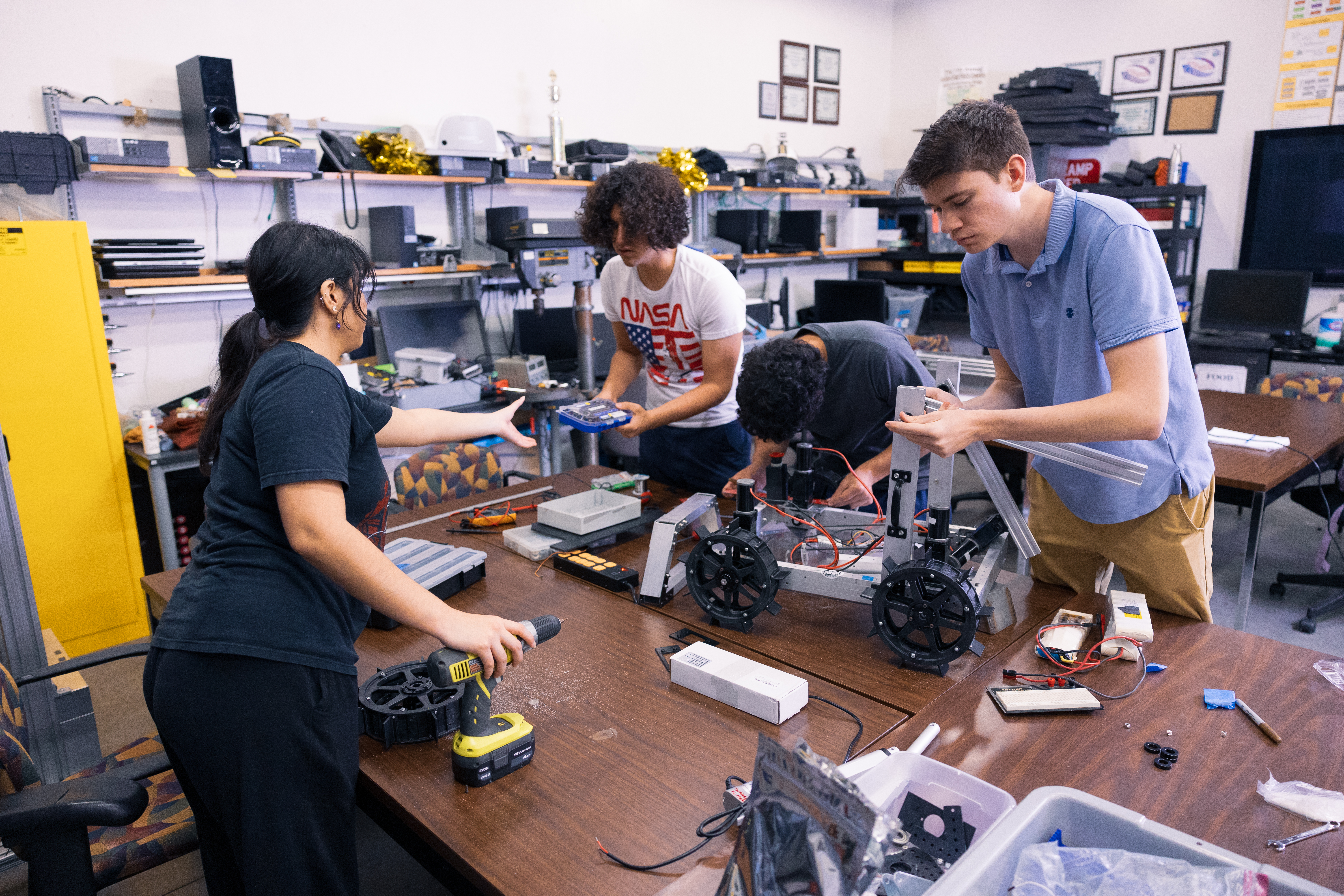 From left to right, Cielo Torres, Jacob Liorca, Thomas Jaycard, and Gavin Fitzgerald work on a robotic rover inside the University of Central Florida’s robotics lab ahead of the 2024 Lunabotics Challenge. University of Central Florida/Antoine Hart NASA’s 2024 Lunabotics Challenge offers more than 40 college teams from across the country the chance to design, build, and operate their own lunar robots, with the top 10 teams advancing to the final demonstrations phase. Media are invited to attend the finals on May 16-17 at the Kennedy Space Center Visitor Complex in Florida.
From left to right, Cielo Torres, Jacob Liorca, Thomas Jaycard, and Gavin Fitzgerald work on a robotic rover inside the University of Central Florida’s robotics lab ahead of the 2024 Lunabotics Challenge. University of Central Florida/Antoine Hart NASA’s 2024 Lunabotics Challenge offers more than 40 college teams from across the country the chance to design, build, and operate their own lunar robots, with the top 10 teams advancing to the final demonstrations phase. Media are invited to attend the finals on May 16-17 at the Kennedy Space Center Visitor Complex in Florida.
The teams’ autonomous rovers must be capable of building a berm structure from lunar regolith to protect critical Artemis infrastructure on the Moon. Such berms could defend against blast and ejecta during lunar landings and launches, shade cryogenic propellant tank farms, shield a nuclear power plant from space radiation, and provide other uses.
“The task of robotically building berm structures will be important for preparation and support of crewed lunar missions,” said Kurt Leucht, NASA software developer and In-Situ Resource Utilization (ISRU) researcher, as well as longtime Lunabotics commentator. “These competing teams are not only building critical engineering skills that will assist their future careers, they are literally helping NASA prepare for our future Artemis missions to the Moon.”
Coverage of Lunabotics will include live streaming of the first round and final round throughout the duration of the competition.
Reporters interested in attending the Lunabotics finals must contact Isabel Kennedy at isabel.kennedy@nasa.gov.
The first round of the challenge takes place May 12-14 in the Exolith Lab at the University of Central Florida in Orlando. Those wishing to attend the first round of the challenge should contact Margot Winick at margot.winick@ucf.edu.
Coordinated by NASA’s Office of STEM Engagement, Lunabotics has taken place annually since 2010. As one of NASA’s Artemis Student Challenges, the competition is designed to engage and retain students in STEM fields by expanding opportunities for student research and design in the areas of science, technology, engineering, and math.
For more competition information, visit:
https://www.nasa.gov/learning-resources/lunabotics-challenge/
– end –
Derrol Nail
Kennedy Space Center, Fla.
321-289-9513
derrol.j.nail@nasa.gov


